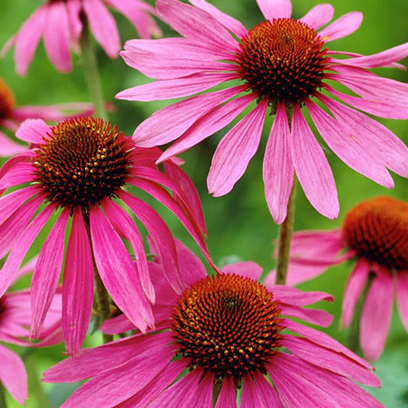ECHINACEA
Echinacea is native to North America, where it is widely distributed. It is a plant which can be easily cultivated and is also found in Europe and in Italy. It is a perennial which flowers in the summer, and enters a period of vegetative rest during the winter. It features a stem with a height varying from 50 cm. to 1.5 metres with lanceolate leaves usually covered by a light down. In fact, there are many species of Echinacea, which demonstrate a certain morphological variability, in terms of flower colour, leaf structure and stem height. Among these species, the most interesting ones in the phytochemical field are Echinacea Purpurea and Echinacea Pallida. Echinacea has been in use since ancient times. It was used by American Indians to treat sores, wounds and traumas of different types; it was also used to relieve skin disorders, in particular the rashes arising from chicken pox, measles and herpes. Besides its anti-infective wound-healing properties, Echinacea is known for its role in protecting the immune system. Consequently, in addition to external use for its soothing, re-epithelizing and phytocosmetic effects, Echinacea is also used systemically to treat colds and fight flu symptoms. These properties have been recognised by the EMEA, the European Medicines Agency. The action of Echinacea is due to its components: flavonoids, such as quercetin and luteolin, and certain derivatives of caffeic acid, such as echinacoside, which exerts a specific antibiotic and bacteriostatic action that can hinder the development of bacteria and counteract the penetration of viruses into healthy cells. Echinacein, on the other hand, is responsible for the anti-inflammatory properties.
Used in: Pinelli Immuno Project™

